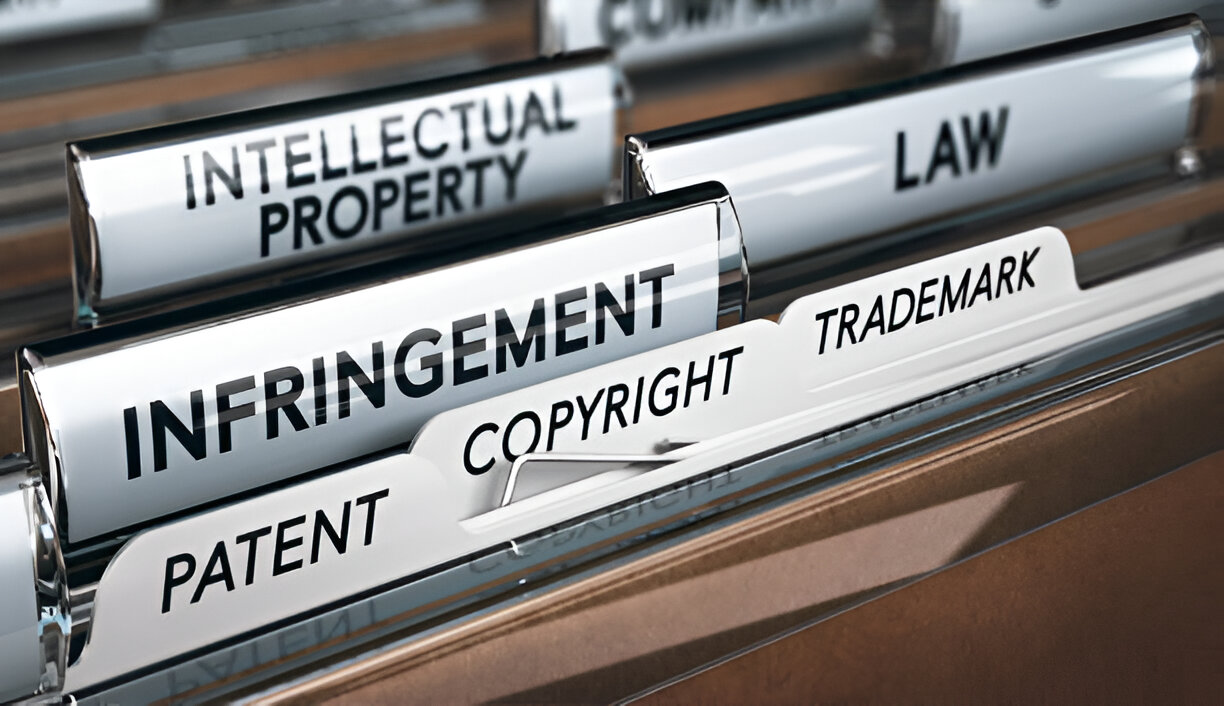Patent infringement claims can significantly threaten businesses, with litigation costs alone running into millions of dollars. According to the United States Patent and Trademark Office (USPTO), patent disputes are a growing concern, particularly in industries that rely on innovation. For businesses, the implications extend far beyond financial losses—such claims can disrupt operations, damage reputations, and stifle growth.
For business owners and executives, understanding patent infringement and how to mitigate the risks is not just prudent—it’s essential. This guide provides an actionable overview of patent infringement, its types, and practical strategies to protect your business from costly legal entanglements. Taking proactive steps can safeguard your intellectual property and ensure your business remains on solid legal footing.
What Constitutes Patent Infringement?
Patent infringement refers to the unauthorized use of a patented invention. This can include manufacturing, selling, using, or importing a patented product or process without the patent holder’s permission. The patent system encourages innovation by granting exclusive rights to inventors for a specified period. When those rights are violated, it constitutes infringement.
There are two primary types of patent infringement that businesses should be aware of:
- Direct Infringement
Direct infringement occurs when a business or individual uses or produces a patented invention without authorization. This can happen in two ways:
- Literal Infringement: When the accused product or process matches every patent claim element exactly.
- Doctrine of Equivalents: When the accused product or process performs the same function in the same way to achieve the same result as the patented invention.
- Indirect Infringement
Indirect infringement involves contributing to or inducing someone else to infringe on a patent. This typically applies to suppliers or distributors knowingly providing components or instructions facilitating infringement. While indirect infringement might seem less straightforward, it is treated just as seriously under U.S. patent law.
Understanding these distinctions is critical for assessing your risks and implementing preventative measures.
How to Protect Your Business from Patent Infringement Claims
Preventing patent infringement claims requires a proactive approach. Below are key strategies businesses can use to minimize risks and safeguard operations.
- Conduct Thorough Patent Research and Clearance Searches
Conduct a comprehensive patent search before launching a new product or service to ensure your innovation does not infringe on existing patents. This involves reviewing patents registered with the USPTO and, where applicable, international patent databases.
- Freedom-to-Operate (FTO) Analysis: Engage a patent attorney to conduct an FTO analysis. This evaluation helps determine whether your product or process can be commercialized without infringing on third-party patents.
- Avoid Assumptions: Just because a patent expired or wasn’t renewed does not mean you can use it. Certain rights may still apply, depending on the circumstances.
- Develop Unique, Documented Processes for Innovation
Encourage originality in your research and development (R&D) processes. Creating a solid foundation for innovation reduces the likelihood of unintentionally infringing on someone else’s intellectual property.
- Maintain Clear Documentation: Record every stage of your product’s development, including brainstorming sessions, prototypes, and testing. This helps establish your claim to originality and provides evidence in case of a dispute.
- Educate Your Team: Train employees in R&D and marketing on respecting intellectual property laws. Awareness can go a long way in preventing accidental infringement.
- Stay Updated on Patent Law and Regularly Consult with a Patent Attorney
Patent laws are complex and can vary between jurisdictions. Staying informed about changes in these laws is essential for avoiding unintentional violations.
- Establish a Relationship with a Patent Attorney: An experienced attorney can help you navigate patent law, conduct periodic audits, and guide contracts and licensing agreements.
- Monitor Competitors: Review your competitors’ patent filings regularly to identify potential risks and opportunities. This can also help you anticipate and address any claims before they escalate.
Consult with Saltiel Law Group to Protect Your Business Against Patent Infringement Risks
Navigating patent law requires specialized expertise. At Saltiel Law Group, we provide tailored legal strategies to help businesses mitigate patent infringement risks and protect their intellectual property. Whether you need assistance with patent clearance searches, licensing agreements, or litigation defense, our team of experienced attorneys is here to guide you. Contact us at 305-735-6565 for expert guidance today!

